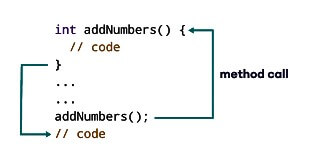Method DefinitionA method in computer science is a section of code that carries out a particular operation or action. Techniques are necessary for segmenting a program into manageable, reusable portions that may be incorporated into various program components. To create these methods, method definitions are essential since they specify the method's variables and return value. This article covers an in-depth discussion of method descriptions and an explanation of how they function in programming languages. The factor is applied, input arguments, return value, and procedure body are all components of a method definition. Each component is crucial in establishing the method's behavior and purpose. The method's activity is described in the method name, which comes first in a method definition. It is crucial to pick a name that appropriately captures the method's objectives. For instance, "calculateRectangleArea" could be the name of a method that determines the area of a rectangle. 
On the other hand, "sortArray" could be the name of a method that sorts an array. When a method is called, variables are provided as input parameters. These parameters give the procedure the information it requires to complete its task. Parentheses and commas are used to separate the input parameters. public double calculateAverage(double num1, double num2) The input parameters in this instance are num1 and num2, both of which are of the double data type. The type of data that a method will return after completing its task is specified by the method's return type. While defining the method, the return type must also be mentioned. A more complicated data type, like an array or a class, can be used instead of a simple type like an integer or Boolean. For illustration, the return type for a method that computes the sum of two numbers could be: public int calculateSum (int num1, int num2) The return type, in this instance, is an integer, which equals the product of the numbers num1 and num2. The block of code that carries out the work the method intends to do is known as the method body. A single line of code or a string of more complicated statements might make up the method body. Curly braces contain the method body, which is executed when the method is invoked. For instance, the following method body may be used to determine the area of a rectangle:
public double calculateRectangleArea(double length, double width) {
double area = length * width;
return area;
}
In this illustration, the method body multiplies the rectangle's length and width to determine the area before returning the value. The input arguments are handed in when invoking a method, and the method returns the designated data type. For instance, the following code would be used to invoke the "calculateRectangleArea" method from the preceding example: double area = calculateRectangleArea(5.0, 10.0); When defining a method, one of the most important considerations is uniqueness. A unique method definition does not conflict with any other method defined in the program or any library that the program uses. This is critical because if two methods have the same name or signature, the program may be unable to determine which one to use, leading to errors and unexpected behavior. One way to ensure uniqueness is to use descriptive and specific names for methods. For example, instead of naming a method "calculate," a more descriptive name like "calculate average" or "calculate_total_cost" would be better. This makes understanding what the method does easier and reduces the chance of naming conflicts. Another way to ensure uniqueness is to use different method signatures. The signature of a method includes the method's name and the number and types of its parameters. Two methods with the same name but different signatures can coexist without issue. For example, a method named "calculate" that takes two integers as parameters could be defined alongside a " calculate " method that takes two floats as parameters. Documenting methods and using original method names and signatures is critical. This involves outlining the method's purpose, inputs and outputs, and any presumptions or restrictions. The likelihood of name conflicts or other problems is decreased thanks to good documentation, making the method simpler for other programmers to comprehend and apply. Features in Method
Advantages of Using the Method
Disadvantages of Using the Method
Example of Method in Programming
Various Method Questions Asked by Top Companies?Employers may inquire about methods during programming interviews to gauge a candidate's comprehension of basic programming principles and their capacity to create and implement effective solutions to challenges. Here are a few illustrations of methods-related queries that businesses might make:
Depending on the organization and the particular job needs, these questions may differ, but they all generally attempt to evaluate a candidate's capacity for applying programming concepts and principles to real-world issues and their capacity for communicating their thought processes and problem-solving abilities.
Next TopicMicroscope Definition
|
 For Videos Join Our Youtube Channel: Join Now
For Videos Join Our Youtube Channel: Join Now
Feedback
- Send your Feedback to [email protected]
Help Others, Please Share










